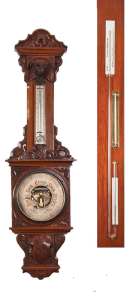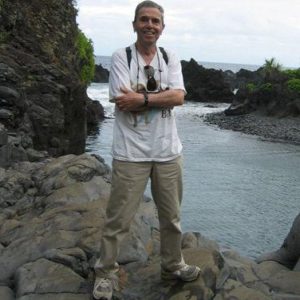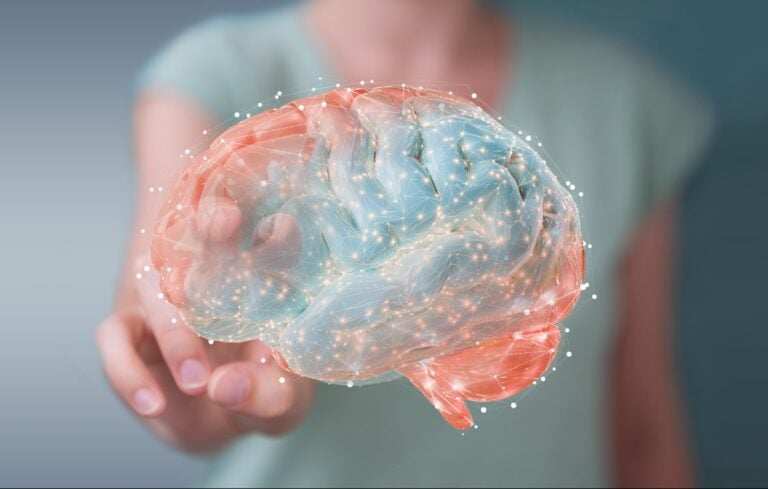
 AccuWeather president and chairman Joel N. Myers has been mesmerized by the weather since he was three—a passion that continued into adulthood. At seven, he stayed up all night to watch a snowstorm. In anticipation of 1954’s Hurricane Hazel, a 14-year-old Myers had his mother rope him to a porch railing to watch the raging storm knock down trees. That year, he became an official observer for the Weather Bureau, now the National Weather Service. At 22, he founded his company while pursuing a Ph.D. in meteorology at Penn State.
AccuWeather president and chairman Joel N. Myers has been mesmerized by the weather since he was three—a passion that continued into adulthood. At seven, he stayed up all night to watch a snowstorm. In anticipation of 1954’s Hurricane Hazel, a 14-year-old Myers had his mother rope him to a porch railing to watch the raging storm knock down trees. That year, he became an official observer for the Weather Bureau, now the National Weather Service. At 22, he founded his company while pursuing a Ph.D. in meteorology at Penn State.
His first office was a tiny, windowless space from which he called 25,000 prospects. Nearly all of them said no, but he kept calling. “I never doubted myself,” he says. “Failure never entered my mind.” His first client, a utility company, paid $50 monthly.
 Over time, his State College, Pennsylvania-based company was able to thrive because “I was able to provide forecasts that were more accurate, had more value and extended further into the future,” he says. Currently, one billion people use AccuWeather’s forecasts each day. It serves 240 of the Fortune 500 companies globally, with forecasts covering 2.7 million locations in 36 languages.
Over time, his State College, Pennsylvania-based company was able to thrive because “I was able to provide forecasts that were more accurate, had more value and extended further into the future,” he says. Currently, one billion people use AccuWeather’s forecasts each day. It serves 240 of the Fortune 500 companies globally, with forecasts covering 2.7 million locations in 36 languages.
Given his life’s passion, it’s only fitting that Myers would become an avid collector of weather instruments. He now owns what Guinness World Records says is the world’s largest collection of thermometers, more than 6,000 items, and one of the largest collections—at approximately 300—of rare and unique barometers.
 The more unusual include an earring thermometer rescued from a 1650 whaling ship, one from the Yukon that gauges temperatures down to minus 100 degrees Celsius and a pill-sized thermometer like the one swallowed by John Glenn in his 1998 mission. His barometers include one created around the year 1680, fewer than 40 years after Italy’s Evangelista Torricelli invented the instrument. Others date back to before the U.S. Revolutionary War.
The more unusual include an earring thermometer rescued from a 1650 whaling ship, one from the Yukon that gauges temperatures down to minus 100 degrees Celsius and a pill-sized thermometer like the one swallowed by John Glenn in his 1998 mission. His barometers include one created around the year 1680, fewer than 40 years after Italy’s Evangelista Torricelli invented the instrument. Others date back to before the U.S. Revolutionary War.
Myers, who has been collecting such specimens for 37 years, admires the fact that, although his weather instruments are hundreds of years old, they’re still working instruments—and often also beautiful. “Weather has been my fascination and life’s work and love,” he notes. Continuing to collect, Myers is visiting antiques dealers these days to look for barometers from the 17th and 18th centuries to fill niches in his collection.




0

1:00 - 5:00 pm
Over 70% of Executives Surveyed Agree: Many Strategic Planning Efforts Lack Systematic Approach Tips for Enhancing Your Strategic Planning Process
Executives expressed frustration with their current strategic planning process. Issues include:
Steve Rutan and Denise Harrison have put together an afternoon workshop that will provide the tools you need to address these concerns. They have worked with hundreds of executives to develop a systematic approach that will enable your team to make better decisions during strategic planning. Steve and Denise will walk you through exercises for prioritizing your lists and steps that will reset and reinvigorate your process. This will be a hands-on workshop that will enable you to think about your business as you use the tools that are being presented. If you are ready for a Strategic Planning tune-up, select this workshop in your registration form. The additional fee of $695 will be added to your total.

2:00 - 5:00 pm
Female leaders face the same issues all leaders do, but they often face additional challenges too. In this peer session, we will facilitate a discussion of best practices and how to overcome common barriers to help women leaders be more effective within and outside their organizations.
Limited space available.

10:30 - 5:00 pm
General’s Retreat at Hermitage Golf Course
Sponsored by UBS
General’s Retreat, built in 1986 with architect Gary Roger Baird, has been voted the “Best Golf Course in Nashville” and is a “must play” when visiting the Nashville, Tennessee area. With the beautiful setting along the Cumberland River, golfers of all capabilities will thoroughly enjoy the golf, scenery and hospitality.
The golf outing fee includes transportation to and from the hotel, greens/cart fees, use of practice facilities, and boxed lunch. The bus will leave the hotel at 10:30 am for a noon shotgun start and return to the hotel after the cocktail reception following the completion of the round.